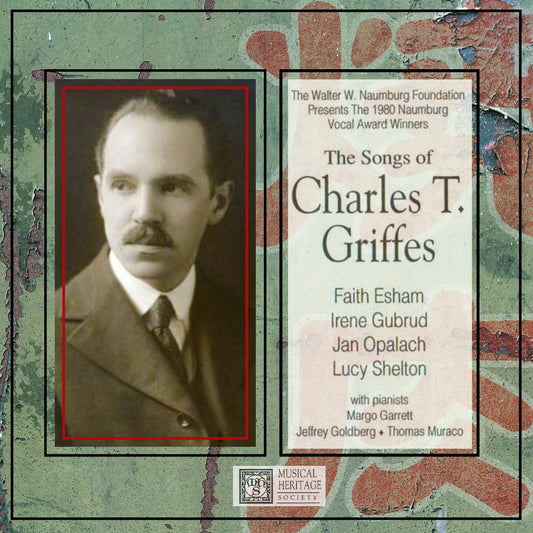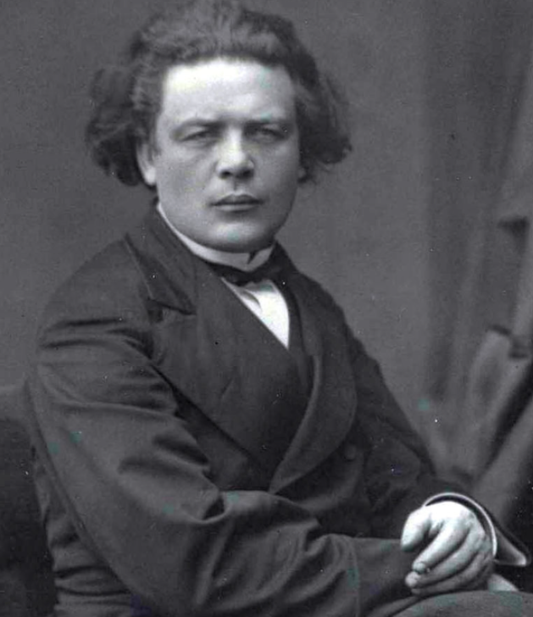Collection: CHARLES TOMLINSON GRIFFES (1884-1920)
Charles Tomlinson Griffes (1884-1920) stands as one of the most compelling and tragically short-lived figures in American classical music. In a career spanning little more than a decade, he forged a unique compositional voice that synthesized European Impressionism with exotic influences and burgeoning American modernism. His early death at the age of 35 robbed the nation of a talent poised for even greater achievements, yet the body of work he left behind remains significant, evocative, and remarkably original.
Born in Elmira, New York, Griffes displayed early musical aptitude, particularly on the piano. Recognizing his potential, his community and teachers helped fund his studies abroad. From 1903 to 1907, he immersed himself in the musical environment of Berlin, studying composition with Engelbert Humperdinck (composer of Hansel and Gretel) and piano at the Stern Conservatory. While grounded in German Romanticism, Griffes was keenly aware of newer trends, particularly the French Impressionism of Debussy and Ravel, whose music resonated deeply with his sensibilities.
Upon returning to the United States in 1907, Griffes faced the common challenge for American composers of the era: finding sustainable work. He secured a position as music director and teacher at the Hackley School for Boys in Tarrytown, New York, a demanding job that consumed much of his time and energy. Despite these constraints, Griffes dedicated his remaining hours, often late into the night, to composition, producing a remarkable output during his tenure.
Griffes's music is often characterized by its exquisite craftsmanship, sensitivity to color, and exploration of non-Western musical ideas. His early works clearly show the influence of French Impressionism, marked by lush harmonies, fluid rhythms, and atmospheric textures. Pieces like the Roman Sketches for piano (Op. 7, 1915-16), which includes the famous movement "The White Peacock," exemplify this style. "The White Peacock," later orchestrated, captures a sense of languid elegance and shimmering beauty through its use of Debussy-esque harmonies and delicate figuration.
Simultaneously, Griffes demonstrated a fascination with "exotic" sounds, drawing inspiration from Asian and Middle Eastern music. This is most famously realized in his opulent orchestral tone poem, The Pleasure Dome of Kubla Khan (Op. 8, completed 1917). Inspired by Samuel Taylor Coleridge's poem, the work employs pentatonic scales, intricate ornamentation, and rich orchestration to create a vivid, dreamlike soundscape of Xanadu. His Five Poems of Ancient China and Japan (Op. 10, 1916-17) for voice and piano further showcases his skill in evoking distant cultures through subtle harmonic and melodic means.
However, Griffes was not content to remain solely within the Impressionist idiom. In his later works, he moved towards a leaner, more dissonant, and structurally rigorous style, bordering on early modernism. His Piano Sonata (1917-18) is a landmark of American piano literature, a powerful and technically demanding work characterized by its angular melodies, complex polyphony, and concentrated intensity. Similarly, the Poem for Flute and Orchestra (1918) blends lyrical expression with more astringent harmonies, pointing towards a new creative direction.
This intense period of creative activity, coupled with his demanding teaching schedule, took a toll on Griffes's health. Already overworked, he contracted influenza during the devastating pandemic of 1918-1919. Weakened and suffering from lung complications, he died in New York City in April 1920.
Charles Tomlinson Griffes's legacy is that of a pioneering American voice who masterfully absorbed European influences while forging his own path. He bridged the gap between late Romanticism/Impressionism and the nascent modernism emerging in America. His fascination with non-Western sounds enriched his musical palette, creating works of unique atmosphere and color. Though his career was tragically brief, Griffes produced a body of work distinguished by its beauty, innovation, and emotional depth, securing his place as a crucial and enduring figure in American music history. His music continues to enchant listeners, offering a poignant glimpse of a profound talent whose full potential remained tantalizingly unfulfilled.





